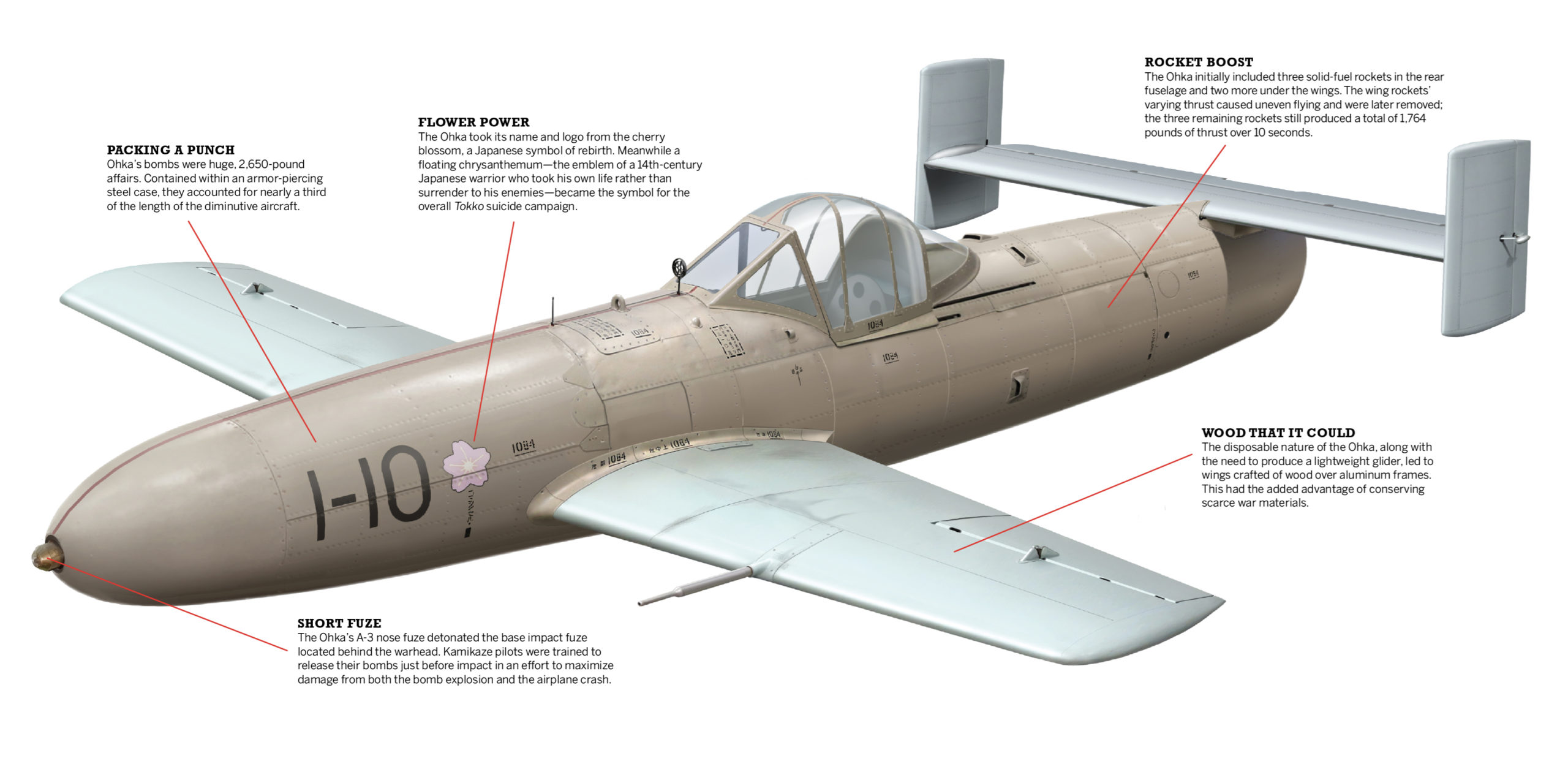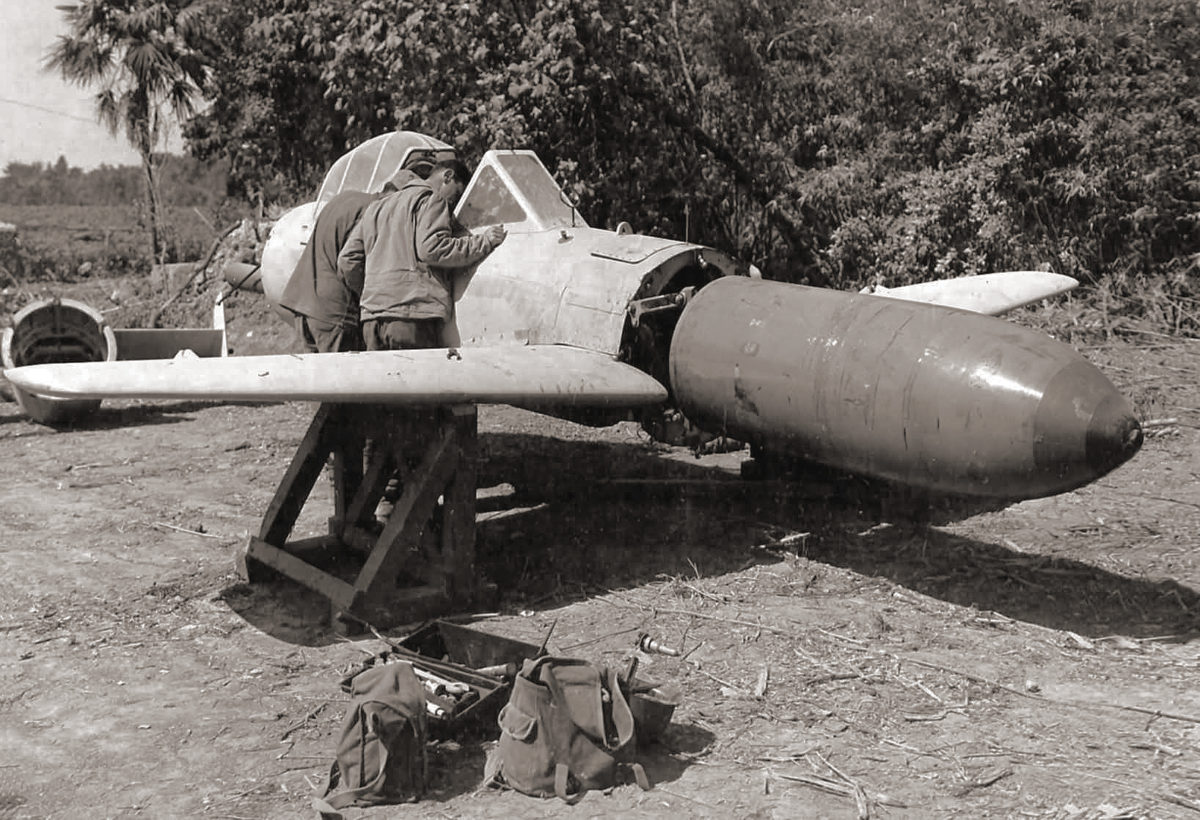As Japan’s fortunes in the Pacific arena went from bad to worse, and with an American invasion of the home islands on the horizon, Japanese High Command began considering drastic defensive strategies. By 1944, they approved a program of suicide warfare called Tokko, or “special attack,” that included submarine-launched Kaiten human torpedos, hand-delivered antitank “mines,” and—most famously—kamikaze (“divine wind”) aircraft. Though not the first deployed, the Ohka was the only custom-designed, purpose-built kamikaze plane to see action.
Engineless Ohkas—basically massive piloted bombs—were ferried to within 23 miles of Allied shipping by Mitsubishi G4M “Betty” bombers, many of which were shot down before they could deliver their load. Ohka pilots—mostly inexperienced flyers groomed for kamikaze warfare—who made it through American defenses would glide toward target ships before igniting three solid-fuel rocket boosters, and dive, increasing their speed to more than 600 mph before impact. Kamikazes were most effective at Okinawa, though overall the suicide planes produced tactically negligible results, with at most seven American ships being struck by the manned flying bombs.
Ohka variants that were self-powered and capable of being launched from farther afield were in development later in 1945, but the war ended before they could be perfected or deployed.







